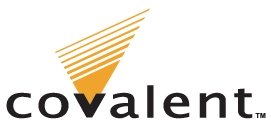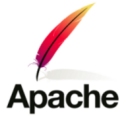
covalent history
Covalent HistoryPatrick Lannigan - Spring 2009History of Covalent TechnologiesThe history of software companies is too often told through rose coloured glasses. Unless you've actually been in a start up software company (or have read Charles Ferguson's High Stakes, No Prisoners), most people don't take stock of the casualties and the (sometimes) gritty tactics required for a startup to survive. Truth is, a startup can survive yet still endure many casualties. Such is the case with Covalent and its founder Randy Terbush. Randy Terbush ended up to be a casualty of Covalent's turbulent restart(s). Covalent: The Beginning
Let's rewind to the beginning of the story. There are press releases from Spring Source (which acquired Covalent) that state that Covalent was founded in 1988. While the name Covalent actually started being used in 1997, its history begins as Zyzzyva ISP, which was founded by Randy Terbush in 1994. It was during those early years that Terbush begin fulfilling the seemingly endless demand for Web service from corporations. One of the earliest problems to solve was that of the development of a reliable and scalable Web server. There were web servers available from CERN and NCSA, but these were designed to serve academic needs. To help build a better Web server, Terbush along with seven others joined forces to enhance the http Web server orginally develped by Rob McCool at NCSA. This group, which would eventually become the Apache Group, was founded in 1995. As history has shown, the formation of the Apache Group and the subsequent development of the Apache Web Server was a critical step in the future explosion of Web innovation (today the Apache Web Server is still the dominant Web server for large scale websites–and continues to undergo a blinding amount of innovation on a daily basis). As the capabilities of the Apache Web Server grew, there was still a nagging problem that faced commercial Web developers. There was a lack of sufficient encryption (which, of course, hindered e-commerce efforts). Further complicating matters was the fact that the "gold standard" of encryption at the time was authored (and patented by) RSA Security. To supply reliable encryption, there had to be a commercial contract signed with RSA Security to supply this encryption. Turbush saw an opportunity... Covalent: Chapter Two: Strict Focus on Apache Add Ons and Customization
Randy Terbush saw an opportunity in 1997/1998 to add improved encryption functionality to Apache. Covalent developed a proprietary add-on module for Apache that would be legally licensed from RSA Security. Raven SSL was released on March 24, 1998. (See the orignal email announcement.) In 1998, US encryption laws required that any cryptography product use a license and approved cryptographic library. This was another reason that providing a cryptographic solution for Web servers was more suited to a commercial entity like Covalent (so they could execute the required license agreements). 1998 was also the year that Covalent merged with InterLink Systems Inc., which was founded by Ryan Lindsay. Lindsay became the Chief Operating Officer of Covalent with a goal of building up its marketing and sales capabilities. Terbush remained at the helm as CEO, CTO, and chairman. 
After the success of Red Hat's IPO on August 11, 1999, the venture capitalists "woke up" to the possibilities of open source software. Apache was an open source product and, as such, attracted the attention of H&Q Venture Associates (now named Granite Ventures), and they approached Randy Terbush with an offer to fund Covalent's growth in resources to take on bigger challenges. In December of 1999, Covalent accepted $5 million in funding from H&Q Venture Associates with the intention of growing the staff of twelve to sixty people by the spring of 2000. H&Q received two board seats. Taking the advice of venture capitalists, Randy Terbush hired John Jack as CEO but Terbush remained chairman of the board and chief technology officer. With over 80 employees (and revenue of just over $1 million?), Covalent was a healthy company, but nobody was happy with the growth trajectory (or lack thereof). Besides slow growth, there were other challenges. There were competitive offerings that could also add security functionality to Apache. Also, in the year 2000 the RSA Security patents ran out, which invited more competitors still. Revenue, by 2002, had climbed to just short of $3 million. A year after Jack came on board, Covalent began a strategy at the suggestion of the VP of engineering to build a Web-centric IT infrastrucutre management product (not unlike Tivoli or BMC's Patrol products). Jack and members of the board liked the idea. To fund this effort, Covalent raised over $35 million dollars from three top tier venture capital firms (Granite Ventures, Sequioa Capital, and Menlo Ventures). Over the next few years, the headcount rose to over 150. Covalent continued its development of a new infrastrucutre management tool over the next few years, but money was running out. In 2003, it all came crashing down. The dot.com crash had happened, there were tired investors, and the new product still had not been released. 
The board decided (not unanimously) to bankrupt the company and split it into two portions. One part (focussing on I.T. infrastructure software) was split off and renamed Hyperic and the other part (traditional support services for Apache) was sold for $1 to Mark Brewer who was VP of sales for Covalent. The "new Covalent" would own the legacy Covalent customer list and existing Apache related support revenue–but they would also be saddled with the liabilities of Covalent (e.g. fulfilling those support contracts). Mark Brewer, now CEO of Covalent, returned the company to its roots and focused on Apache related support services. Over the next few years, Brewer managed to hire some of the staff that had been laid-off as a result of the bankruptcy. In January of 2008, SpringSource acquired Covalent (for an undisclosed sum). Mark Brewer became vice president and general manager of SpringSource’s new Covalent business unit. SpringSource became successful by focusing on many of the newer Java-meets-Apache technologies and frameworks like Tomcat, Spring, Groovy, Grails, Apache ActiveMQ, etc. SpringSource Acquires Hyperic
SpringSource acquired the assets of Hyperic (a company orginally spun out of Covalent Technologies) on May 4, 2009, for an undisclosed sum. VMWare Acquires SpringSource
VMWare acquired SpringSource on August 10, 2009, for pproximately $362 million in cash and equity plus the assumption of approximately $58 million of unvested stock and options. Lessons Learned?Sometimes, in a startup, the future is foggy at best. Covalent became enchanted with bulding infrastructure tools, but got into trouble and ended up spinning off that company into Hyperic. To pay the rent, and to feed himself, Mark Brewer, CEO of Covalent at the time, returned Covalent to its roots by redoubling support efforts for the Apache web server (and related modules). This allowed Covalent to stabalize and return to a period of growth. Both companies (Hyperic and Covalent) ended up being purchased by SpringSource. The lessons learned? Stay flexible. Do what you have to do to stay alive. Keep your rolodex active. As for Randy Terbush, I don't envy him having to witness everyone get their "liquidation day" but him. Those scars will stay with him a long time. There's one thing he couldn't escape. People are people. The importance of "people chemistry" at the board level cannot be understimated. And when the board members at Covalent had a vision for (what would become) Hyperic, it was hard to hold them back. Today, Randy is older and wiser and is much more likely to stop that type of chemstry happening in real time. He should still feel proud for what he started and all the pioneering work he's done. I hope he's recognized by the Apache community, someday, for his contribution. |
|
|
Email Patrick Lannigan at lannigan at gmail dot com for more information |
|
This page was created and/or refreshed on April 12, 2017 @ 14:50:56
|